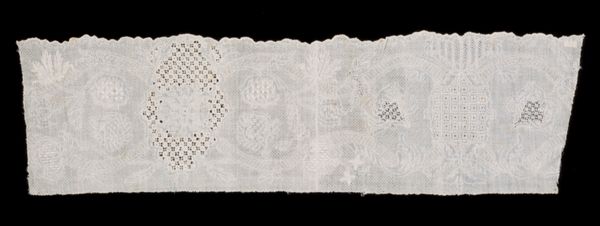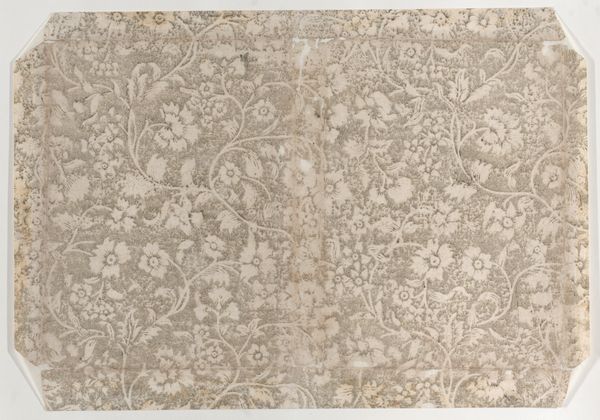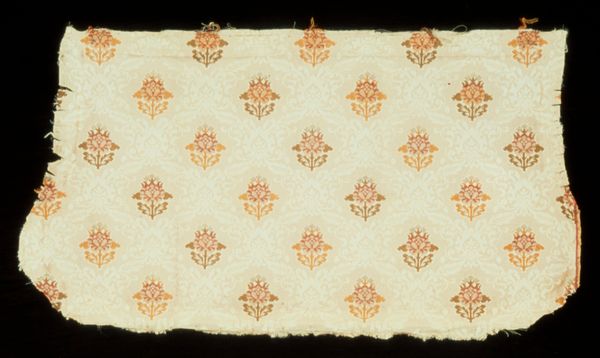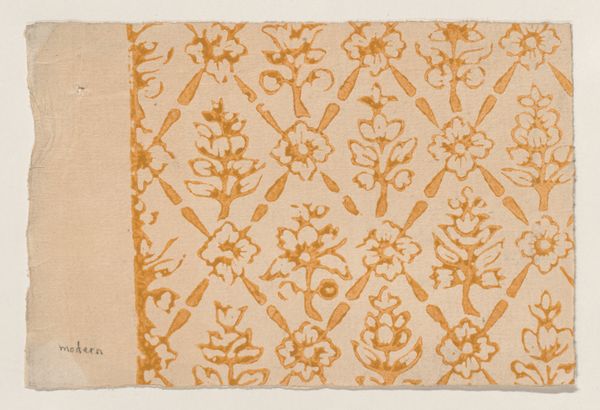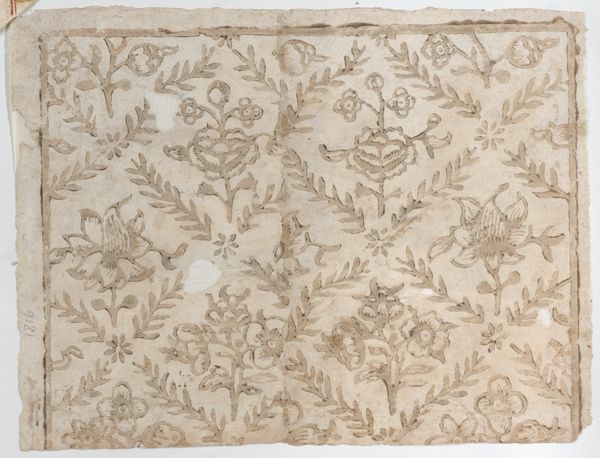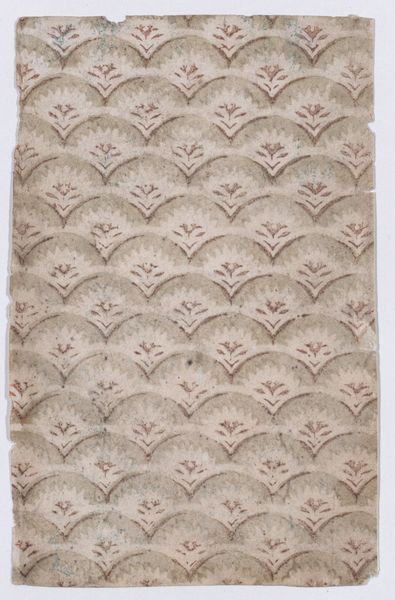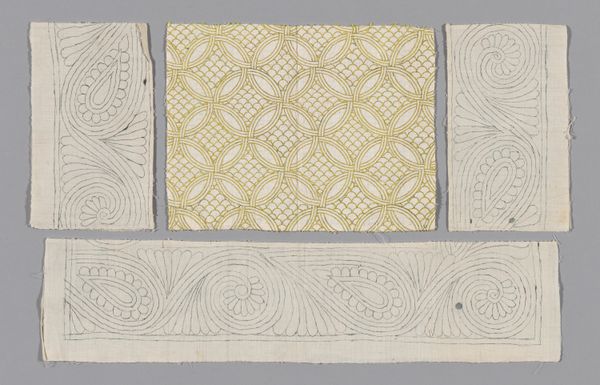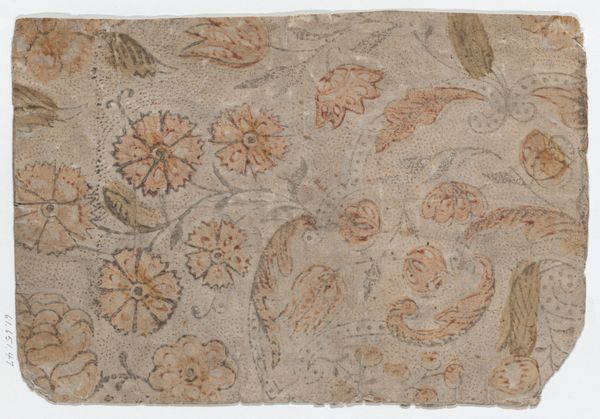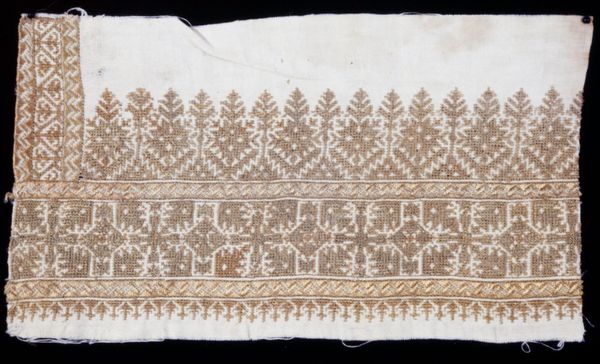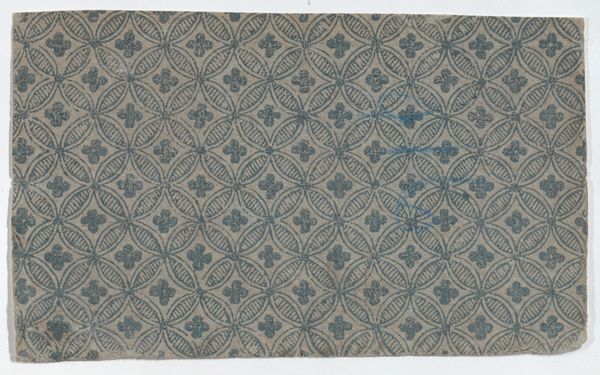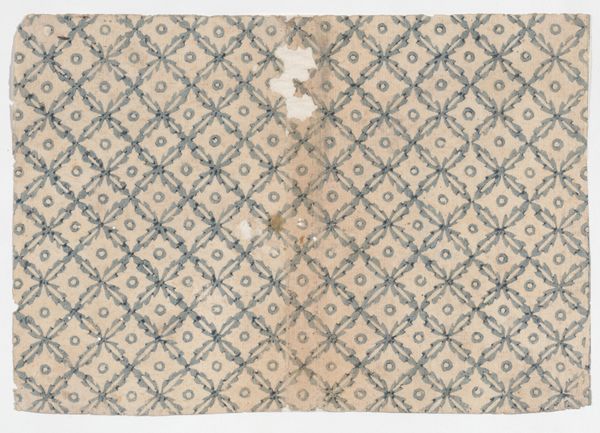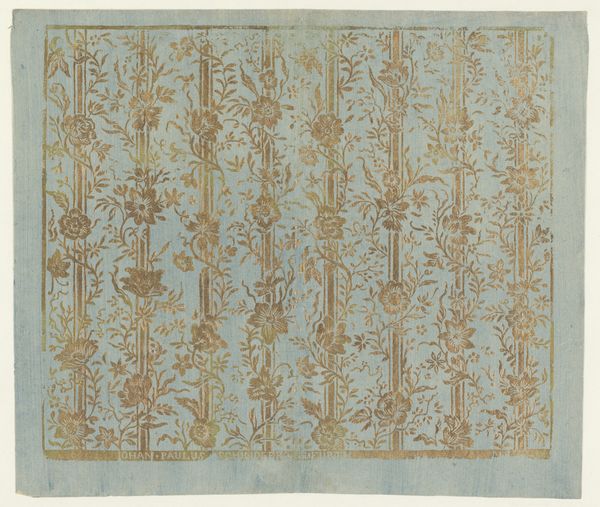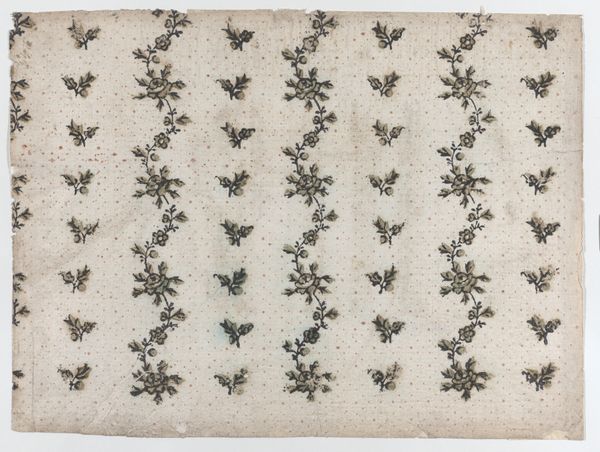
drawing, print, textile, paper
#
drawing
# print
#
textile
#
paper
#
decorative-art
#
watercolor
Dimensions: Sheet: 2 7/8 × 8 7/16 in. (7.3 × 21.4 cm)
Copyright: Public Domain
Editor: Here we have "Fragment of a sheet with green curved shapes," created sometime in the 19th century, and residing at the Met. It appears to be a printed design on paper, perhaps intended for textiles? The delicate repetitive pattern, makes me think of wallpaper, but what exactly am I looking at? What is your read of the formal elements at play in this fragment? Curator: I see a calculated dance between positive and negative space. The repeated green motifs, predominantly curvilinear, create a rhythm. Notice how the artist, or designer, utilizes the negative space - the white areas - to define and enhance those green forms. The precision and the overall effect is somewhat classical. Editor: Classical? That's interesting. So, you see order in the repetition and symmetry? Curator: Precisely. And if we analyze it further using structuralism, you will note the motifs as signifiers; consider their arrangement and what symbolic systems that implies about design during its period. Does that seem relevant? Editor: Absolutely. The precision certainly suggests something about industrialization. But doesn’t the fragment itself—the incompleteness— disrupt the intended sense of perfect order? Curator: Indeed. The fragment presents us with a fascinating tension. It offers an example of what it may feel like if you think of Deconstructionism; a design hinting towards ideals, but the execution disrupted or incomplete in its form, drawing attention to itself, a commentary on the inherent instability. Editor: So the incompleteness actually enriches the work. Fascinating! Thanks for this, it certainly provides an additional context through which to consider textile designs. Curator: The piece, indeed, raises worthwhile questions. Appreciating how it blends historical influences while reflecting inherent formal tensions opens a broader horizon in appreciating artwork.
Comments
No comments
Be the first to comment and join the conversation on the ultimate creative platform.
